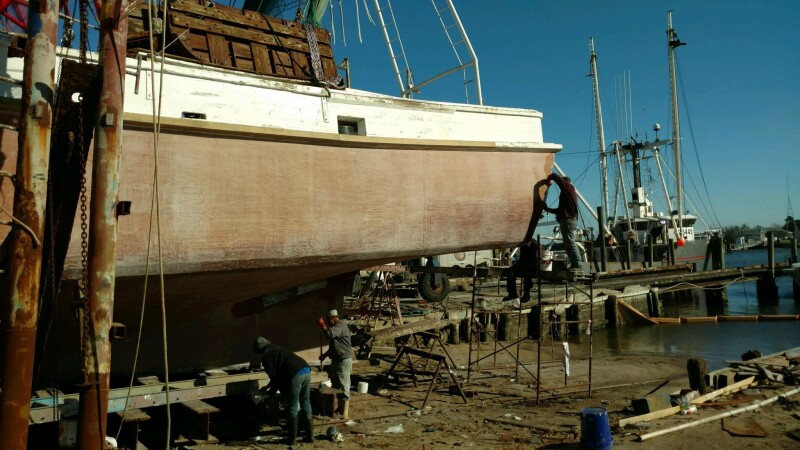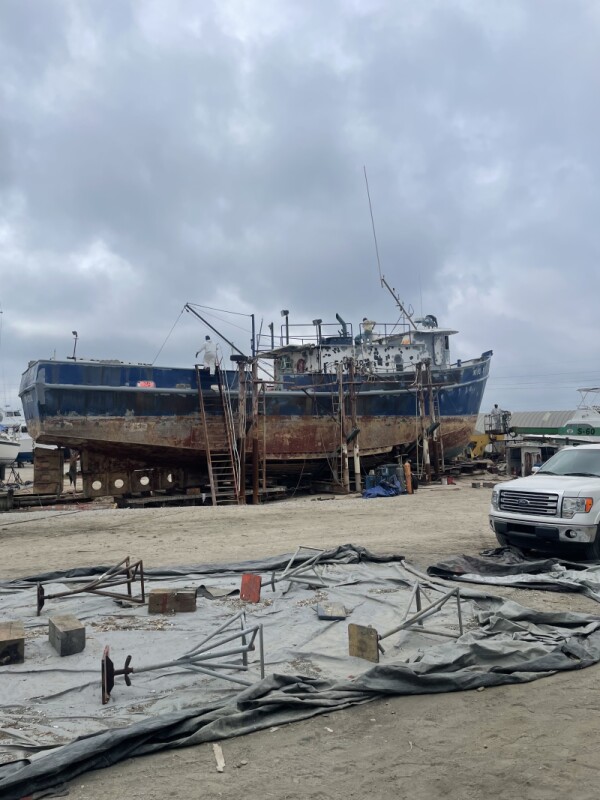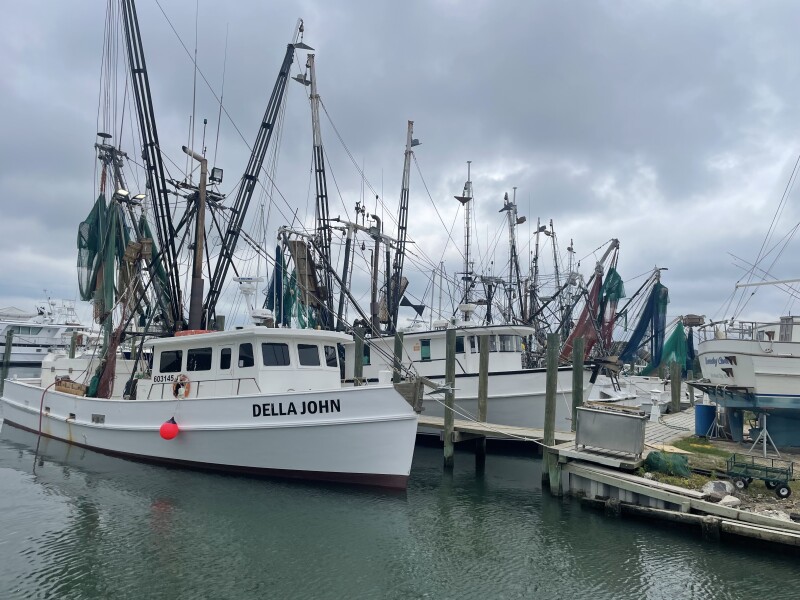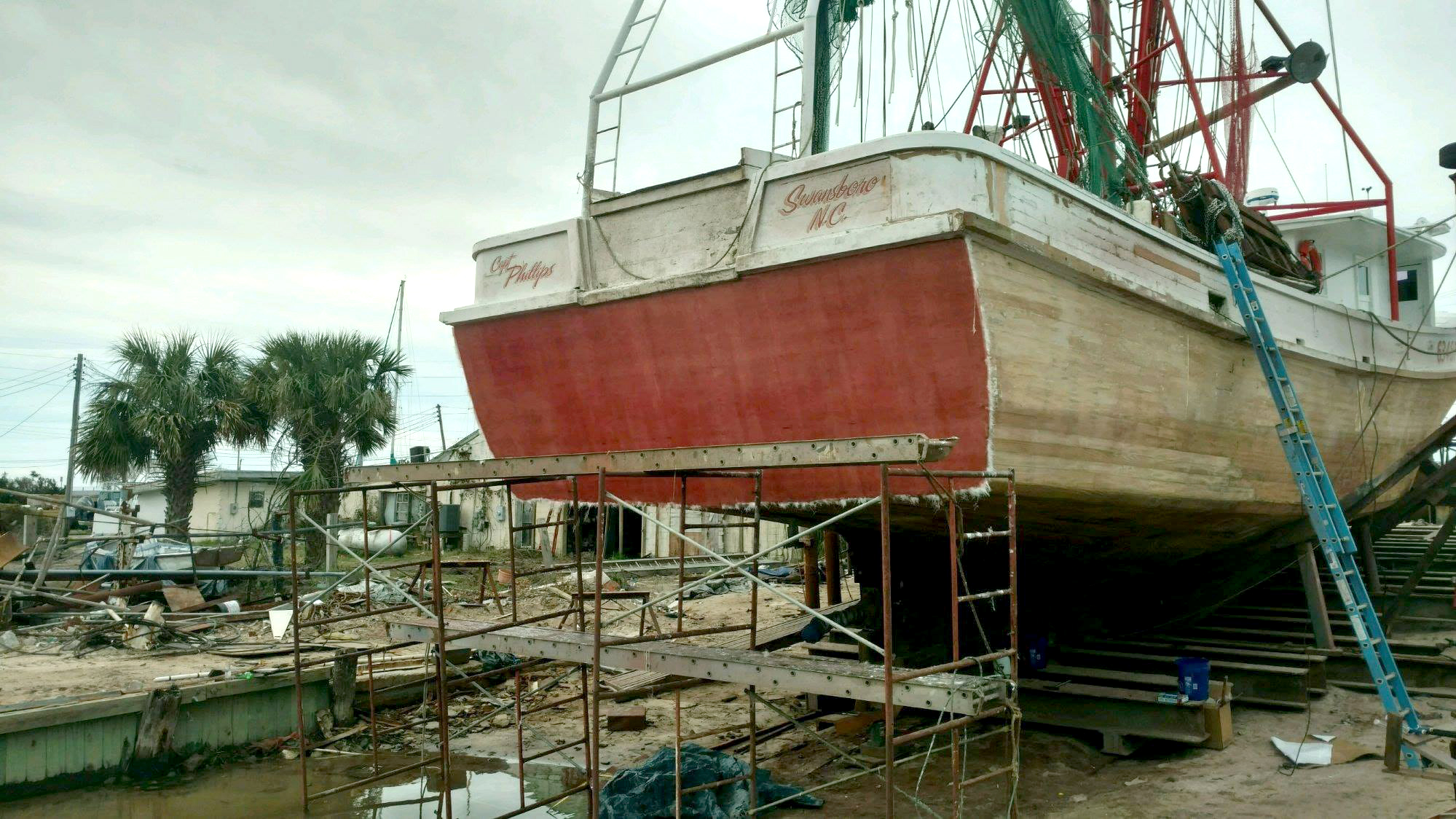Gerry Smith took over the seafood business his father started in Beaufort, North Carolina in 1947, but he and his sons, Ted and Todd, turned to boat building there instead.
“I think boat building is in our blood,” says Smith, now 78 years old. “We found we liked building boats more than selling fish.”
According to Smith, the yard has built a few steel trawlers and modified others over the years. “We do a lot of work on the boats from Cape May, New Jersey,” he says.
The Smiths bought an adjoining property and established a marina for the small shrimp boat fleet. While the yard’s work mostly involves steel boats, the Smiths have also helped keep some of the older wooden boats afloat, including the Capt Phillips, a 78-foot shrimp trawler from down the coast in Swansboro, North Carolina.
The Capt Phillips was built in 1981 in Holdens Beach, North Carolina. “I’m pretty sure Billy Varnum built it,” says James Phillips, owner of the boat and Clyde Phillips Seafood Market in Swansboro. “She draws about 8 foot of water,” says Phillips. “When we first got the boat there was enough water here we could get out on high water, but the last time we went it was kind of rough and we bumped all the way, so we go out of Beaufort now.”

Phillips bought the Capt Phillips in 1993 and had a boat carpenter at Ted and Todd’s, Jeff Heyland, keep the vessel sound up until 2019 when he decided to glass it. “The boat was getting age. There weren’t no bad wood in it or nothing, ‘cause we went in about six years ago and redone the floor timbers and such as that, as needed. But it was just getting old enough, and we had a chance to do it, and we had a good man to do it, so we went ahead and decided to get it done.”
While many people consider fiberglass and wood to be a bad mix, Phillips has no qualms about his decision. “It puts new life in these old wooden boats,” he says.
According to Phillips, they took the boat to Ted and Todd’s, and Bubba Trutt from Darien, Ga., did the work. “That boy’s dad was one of the first ones to start fiberglassing wooden boats,” he says. Phillips notes that the deck was fiberglassed when the boat was built. “We did her from the bottom up to the deck.”
Ted Smith, Gerry’s son, runs the yard and oversaw the work on the Capt Phillips. “There’s different ways to do it,” Smith says of the fiberglassing. “Bubba prefers using 5200. What they do is sandblast the whole bottom of the boat to where it takes all the paint off and it roughs up the wood enough, then they trowel on the 5200 with cement trowels. Then they start wetting the glass in with big fat rollers.” Troweling 5200 onto a 78-foot hull is a laborious job, but according to Smith, Bubba and his crew get it done.
“They are workers,” he says. “There’s five of them. They were here about a month. They time it by the moon, so they would haul the boat on the full moon, and then they had a month to get it done so they could get it back in the water on the next full moon.”
Bubba Trutt is still at it, though he has slowed down.

“We did one a month and half ago,” he says. “A 70-foot shrimp boat.” Trutt staples a base layer of something called Bi-Ply over the 5200, and then applies polyester resin and mat. “We can do one or two layers of Bi-Ply, and one or two of mat,” says Trutt. “Whatever the customer wants.”
According to Clyde Phillips, captain of the Capt Phillips, the boat got one layer of Bi-Ply and two layers of mat that overlapped on the knuckle (chine) and at the turn of the bilge to the keel. “Then they reinforced so there’s twelve layers on the knuckle and twelve where the bottom meets the keel,” says Clyde. “I don’t know how many they put on the stem and the horn timber. I lost count.”
Calling in from fishing for rose shrimp just off the coast, Clyde Phillips reports that the boat is strong and solid.
“As long as the wood is good when you glass it, it’ll be fine,” says Bubba Trutt. “I got a boat in the yard here that we glassed more than 30 years ago.”








